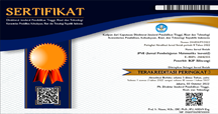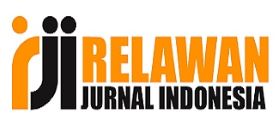ANALISIS KESALAHAN BELAJAR MATEMATIKA SISWA KELAS VIII PADA MATERI SISTEM PERSAMAAN LINEAR DUA VARIABEL DENGAN METODE ELIMINASI
DOI:
https://doi.org/10.22460/jpmi.v6i1.12161Keywords:
Evaluation, System Of Linear Equations Of Two VariablesAbstract
In this study to carry out the learning process, it is necessary to evaluate students to find out errors during the learning process. The purpose of this study was to find out the learning errors of class VIII students in mathematics, the subject of a two-variable linear equation system with the elimination method. This study uses quantitative descriptive research to determine the percentage of students' errors in learning. The subjects of this study used 1 room, namely room 06 class VIII-C with 20 students, consisting of 13 boys and 7 girls. One room has characteristics with low, medium and high categories seen from the acquisition of the Final Semester Assessment. The test instrument of this research used 5 questions. Difficulty in solving mathematics learning problems with two-variable system of linear equations which include: 1). Difficulty in making a mathematical model of the material system of linear equations of two variables; 2). Difficulty in understanding the problem; 3). Difficulty in the calculation process 4). Difficulty in concept.
References
Amir, M. F. (2015). Analisis Kesalahan Mahasiswa PGSD Universitas Muhammadiyah Sidoarjo dalam Menyelesaikan Soal Pertidaksamaan Linier. Jurnal Edukasi, 1(2), 131–145.
Cahirati, P. E. P., Makur, A. P., & Fedi, S. (2020). Analisis Kesulitan Belajar Siswa dalam Pembelajaran Matematika yang Menggunakan Pendekatan PMRI. Mosharafa: Jurnal Pendidikan Matematika, 9(2), 227–238. https://doi.org/10.31980/mosharafa.v9i2.576
Diana, D., Fitriani, N., & Amelia, R. (2021). Sistem Persamaan Linear Dua Variabel: Ditinjau Dari Analisis Kesalahan Siswa MTS Kelas VIII Pada Pembelajaran Daring. Jpmi (Jurnal Pembelajaran Matematika Inovatif), 4(4), 985-992. https://doi.org/10.22460/jpmi.v4i4.985-992
Faelasofi, R. (2017). Identifikasi Kemampuan Berpikir Kreatif Matematika Pokok Bahasan Peluang. Jurnal Pendidikan Matematika, 3(2), 155–163. https://doi.org/https://doi.org/10.52657/je.v3i2.460
Hendriana, H., Rohaeti, E. E., & Sumarmo, U. (2017). Hard Skill dan Soft Skill Matematika Siswa. Bandung: Refika Aditama.
Kadir, A. (2015). Menyusun dan Menganalisi Tes Hasil Belajar. Jurnal Kajian Ilmu Kependidikan, 8(2), 70–81. https://doi.org/http://dx.doi.org/10.31332/atdb.v8i2.411
Lukum, A. (2015). Evaluasi Pembelajaran IPA SMP Menggunakan Model Countenance Stake. Jurnal Penelitian Dan Evaluasi Pendidikan, 19(1), 25–37. https://doi.org/10.21831/pep.v19i1.4552
Radiusman, R. (2020). Studi Literasi: Pemahaman Konsep Anak Pada Pembelajaran Matematika. FIBONACCI: Jurnal Pendidikan Matematika Dan Matematika, 6(1), 1-8. https://dx.doi.org/10.24853/fbc.6.1.1-8
Rismawati, M., & Asnayani, M. (2019). Analisi Kesalahan Konsep Siswa Kelas IV Dalam Menyelesaikan Soal Matematika dengan Metode Newman. J-PiMat : Jurnal Pendidikan Matematika, 1(2), 69–78. https://doi.org/10.31932/j-pimat.v1i2.495
Syarifudin, T. (2009). Landasan Pendidikan. Bandung: Percika Ilmu.
Wibawa, E. A. (2019). Karektiristik Butir Soal Tes Ujian Akhir Semester Hukum Bisnis. Jurnal Pendidikan Akuntansi Indonesia, 17(1), 86–96. https://doi.org/10.21831/jpai.v17i1.26339
Downloads
Published
Issue
Section
License
Copyright (c) 2023 JPMI (Jurnal Pembelajaran Matematika Inovatif)

This work is licensed under a Creative Commons Attribution-ShareAlike 4.0 International License.
The author is responsible for acquiring the permission(s) to reproduce any copyrighted figures, tables, data, or text that are being used in the submitted paper. Authors should note that text quotations of more than 250 words from a published or copyrighted work will require grant of permission from the original publisher to reprint. The written permission letter(s) must be submitted together with the manuscript.
















